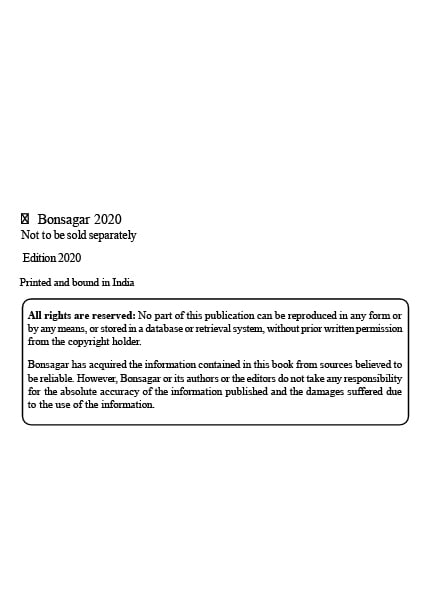How Technology is Changing the Way We Communicate
The advent of technology has fundamentally transformed the way people communicate. From the development of the telephone to the rise of social media, technology has dramatically reshaped how we connect with one another, share information, and engage in personal and professional interactions. Communication is no longer confined to face-to-face or voice-based exchanges; it has expanded to include virtual platforms, instant messaging, and even artificial intelligence-driven interactions. This transformation has made communication faster, more accessible, and increasingly global. However, while these technological advancements bring many benefits, they also present challenges and potential drawbacks. This article explores how technology is changing communication, its impact on relationships, and the opportunities and challenges it creates.
1. Instant Communication and Connectivity
One of the most profound ways in which technology has changed communication is by enabling instant connectivity across the globe. The rise of smartphones, social media, and messaging apps has allowed people to connect with others regardless of geographical barriers. Whether through a text message, a video call, or social media posts, individuals can now communicate in real time with people on the other side of the world.
Before the advent of these technologies, communication was often slower and more restricted. Letters, landline phones, and even fax machines had limited reach, and international communication was either costly or time-consuming. With tools like WhatsApp, Facebook, and Skype, it is now possible for people to stay connected in an instant, share updates, and collaborate on projects effortlessly. This connectivity is not only vital for maintaining personal relationships but has also been critical in business, education, and emergency response systems.
For example, during the COVID-19 pandemic, video conferencing platforms like Zoom became essential for business meetings, school lessons, and social interactions, allowing people to continue their activities remotely. Instant messaging and collaboration tools like Slack and Microsoft Teams became vital for professionals to stay in touch, collaborate on projects, and remain productive while working from home.
2. The Rise of Social Media and Online Platforms
Social media has become one of the most significant tools for communication in the digital age. Platforms like Facebook, Twitter, Instagram, and LinkedIn have allowed people to share their thoughts, ideas, and experiences with a global audience, transforming the way individuals communicate and share information. These platforms have also enabled businesses, politicians, and public figures to directly engage with their audiences without the traditional filters of the media.
The ability to broadcast personal and professional updates, post multimedia content, and engage with others through comments and likes has changed how we express ourselves and interact with others. For example, Twitter has become a platform for real-time news and discussions, Instagram allows users to share images and short videos, while LinkedIn provides a professional networking platform where users can connect with colleagues, mentors, and potential employers.
Social media has also reshaped the nature of relationships, with many people maintaining friendships, family connections, and professional networks primarily online. While this allows for global interactions, it also creates new challenges, such as the potential for oversharing, cyberbullying, and the impact of online personas on real-world relationships.
3. Impact on Language and Communication Styles
Technology has significantly influenced the way language is used. With the rise of texting and instant messaging, shorthand, abbreviations, and emojis have become commonplace in digital communication. Words like “LOL” (laughing out loud), “BRB” (be right back), and “OMG” (oh my god) have entered mainstream language, especially among younger generations. While this kind of language is efficient and suited to the fast-paced nature of digital communication, it has raised concerns about the decline of formal language skills, particularly in professional or academic settings.
Furthermore, the use of emojis and gifs has introduced a new form of expression, allowing people to convey emotions or reactions that words alone may not fully express. For example, a simple smiling face emoji can convey friendliness, appreciation, or agreement, while a thumbs-up icon can serve as a quick acknowledgment. This non-verbal communication, while effective in certain contexts, can sometimes lead to misunderstandings when nuance or tone is lost in digital conversations.
Voice assistants and artificial intelligence (AI) are also changing the way people communicate. Devices like Siri, Alexa, and Google Assistant allow users to interact with technology using voice commands, making communication with machines more intuitive and accessible. AI-powered chatbots on websites and customer service platforms are replacing traditional human interactions, providing instant responses to inquiries and offering 24/7 customer support.
4. Enhanced Collaboration and Remote Communication
In the professional world, technology has revolutionised how teams collaborate, especially in the context of remote work. Tools like Google Docs, Trello, and Slack allow for real-time collaboration, where multiple users can work on the same document, track tasks, and communicate without needing to be in the same physical location. These tools enable more flexible work environments, where people can communicate and collaborate efficiently, regardless of their location.
Video conferencing platforms such as Zoom, Microsoft Teams, and Google Meet have also made it easier for teams to meet and communicate virtually, reducing the need for physical meetings and making it possible for teams to work across different time zones. This has allowed businesses to tap into global talent and improve productivity by eliminating geographical barriers.
In education, the use of digital learning platforms and virtual classrooms has also made it possible for students to attend classes and participate in discussions remotely. This is particularly useful for students in rural areas or those who are unable to attend in-person classes due to health or personal reasons.
5. Challenges: Digital Communication and Its Impacts on Personal Relationships
While technology has made communication more efficient and widespread, it has also introduced challenges, particularly in terms of personal relationships. The ease of digital communication can sometimes result in people feeling disconnected from one another. The constant stream of notifications, messages, and social media posts can lead to feelings of information overload and anxiety. Additionally, the absence of non-verbal cues, such as body language or facial expressions, in digital communication can lead to misunderstandings and a lack of emotional depth.
In face-to-face conversations, tone, eye contact, and gestures play a crucial role in conveying meaning. In digital communication, these cues are often lost, leading to potential misinterpretations. For instance, a sarcastic comment in a text message may be misread as genuine, or a brief response might be perceived as rude when the sender did not intend it that way.
Moreover, excessive use of digital communication can also lead to a reduction in face-to-face interactions, potentially weakening personal relationships. People may find it easier to communicate through text or social media than to engage in in-person conversations, leading to social isolation or a lack of genuine connection.
6. The Role of Technology in Enhancing Inclusivity
Technology has also played an important role in enhancing inclusivity in communication. For individuals with disabilities, technologies like speech-to-text software, screen readers, and hearing aids have opened up new avenues for communication. These tools have enabled people with hearing impairments to participate in video calls, while speech-to-text applications have helped individuals with physical disabilities to communicate more easily.
Moreover, technology has made it easier to access information in different languages. Translation tools such as Google Translate allow people to communicate across language barriers, enabling global conversations that would have been impossible without these tools. This has expanded opportunities for cross-cultural exchange and collaboration, making the world more interconnected than ever before.
Conclusion
Technology has dramatically changed the way we communicate, making it faster, more accessible, and more versatile. It has revolutionised personal, professional, and educational communication, offering new opportunities for collaboration, connection, and inclusivity. However, as we embrace these technological advancements, it is essential to be mindful of the challenges they present, including the potential for miscommunication, social isolation, and the erosion of face-to-face relationships. Balancing the use of digital tools with real-world interactions is key to ensuring that technology enhances, rather than hinders, meaningful communication. As technology continues to evolve, its role in shaping communication will undoubtedly expand, offering new ways for people to connect, share, and understand each other across the globe.




